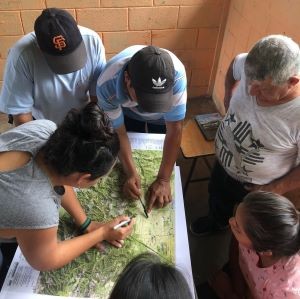This Collection will highlight research and case studies that adopt participatory, community-led, or co-produced approaches to volcanic risk and resilience.
Experience and research into effective volcanic risk reduction highlights the importance of community involvement and community-led approaches to understanding and anticipating risk, as well as effective response, and recovery. Systems and solutions that do not include community needs, can reduce their efficacy, and, at worst disengage those communities, wasting resources and creating risk. Identifying approaches to volcanic risk reduction in partnership with communities can foster community ownership, empowerment, and control; enhancing the resilience of those communities. Co-production of risk knowledge and risk solutions not only result in outcomes that are more meaningful, relevant, and successful, but can also lead to improved understanding of volcanic risk for all parties.
However, developing participation with communities presents multiple challenges: including lack of community resources, time to engage alongside other priorities, language and communication barriers, the need to spark engagement or interest, lack of awareness of community challenges and systemic barriers, etc. Recently, novel approaches to working with communities have been identified to overcome such participation challenges, including citizen science projects, engagement of appropriate facilitators and community leaders, knowledge co-production and resource sharing initiatives. There is also a growing awareness about the importance of ethical and just partnerships: built with an awareness of the prior history of the region, the communities, their cultural practices, and relationships with authorities. By incorporating multiple perspectives of risk and knowledge, particularly those of indigenous peoples, there is greater potential to increase relevance, efficacy, and cultural appropriateness of co-produced systems and solutions. Leveraging different types of knowledge also offers opportunities to set up risk governance approaches that are inclusive, and help to redress power imbalances between stakeholders.
In this Collection we seek to highlight community participation initiatives in volcanic contexts and capture this emerging knowledge. We are interested in articles that address the spectrum of approaches and challenges. This encompasses the spectrum of community engagement from wholly community-led initiatives, through knowledge co-production, to novel examples of successful engagement led by volcano scientists or managers of risk. We particularly welcome reflections on pitfalls and challenges, and even examples of failure. We will also consider many definitions of community: from local communities and populations, through to communities of stakeholders and decision-makers. We thus seek contributions from the broad communities involved in understanding and managing volcanic risk: including physical and social scientists, indigenous researchers, practitioners, policy and planners, emergency managers, central and local government, and local community leaders.
We encourage authors to share experiences and methods for empowering local communities, authorities and partnerships, engaging multiple and diverse stakeholders, understanding local expressions of hazards and risk, and sharing responsibilities, as beacons for the core goals of the SENDAI Framework. Volcanic risk settings are inherently multi-hazard, and can present outstanding exemplars of means to “leave no-one behind” in the context of sustainable development and global environmental change. This speaks directly to the aspirations of both the SENDAI framework and the UN Sustainable Development goals which seeks to eliminate poverty (Goal 1) and share knowledge and education (Goal 4) with all (Goals 5 and 10), for the development of inclusive and sustainable settlements (Goal 11). As such, we also welcome contributions that consider implications of this work for sustainable development in other contexts.
Topics of interest include:
- Research exploring effective approaches to participatory, community-led, and co-produced volcanic risk assessment and management.
- Reviews and application of different tools and methodologies for ensuring community voices in volcanology: e.g., participatory action research, design science, collaborative planning process.
- Descriptions of research design and methodologies to monitor and evaluate the success of such approaches.
- Novel methods and tools that have been used to effectively engage communities.
- Case studies outlining approaches used, challenges, and lessons, including relationship building and management and how the spectrum of participation is determined.
- Indigenous perspectives to risk and risk management in volcanic contexts.
- Ethics of participations: for engagement, for research, for partnerships.
- Reviews of the challenges and barriers (e.g., resources, time, capacity, language differences) and proposed solutions, or examples, to overcome them.
- Tools and approaches to identify community needs.
- Case studies for volcanic risk assessment, forecasts and warnings, evacuation planning, risk reduction or management, resilience building, response, and recovery.
- Other contributions outlining research or case studies of approaches or best practices for fostering participation in the understanding of, and management of, volcanic risk.
Prior abstract submissions are not necessary, however the Guest Editors welcome authors to discuss ideas they may have for manuscripts prior to submission. Springer Nature offers several options for open access fee support, these include institutional , reduced fees for for corresponding authors based in lower income countries (as defined by the World bank), and case-by-case waivers or discounts based on financial need. The Journal of Applied Volcanology also has a limited number of Journal-specific partial and full fee waivers that can be assessed on a case-by-case basis based on need. If you are interested in applying, please indicate your interest at the point of manuscript submission and outline your case in your submission letter. More information can be found .

